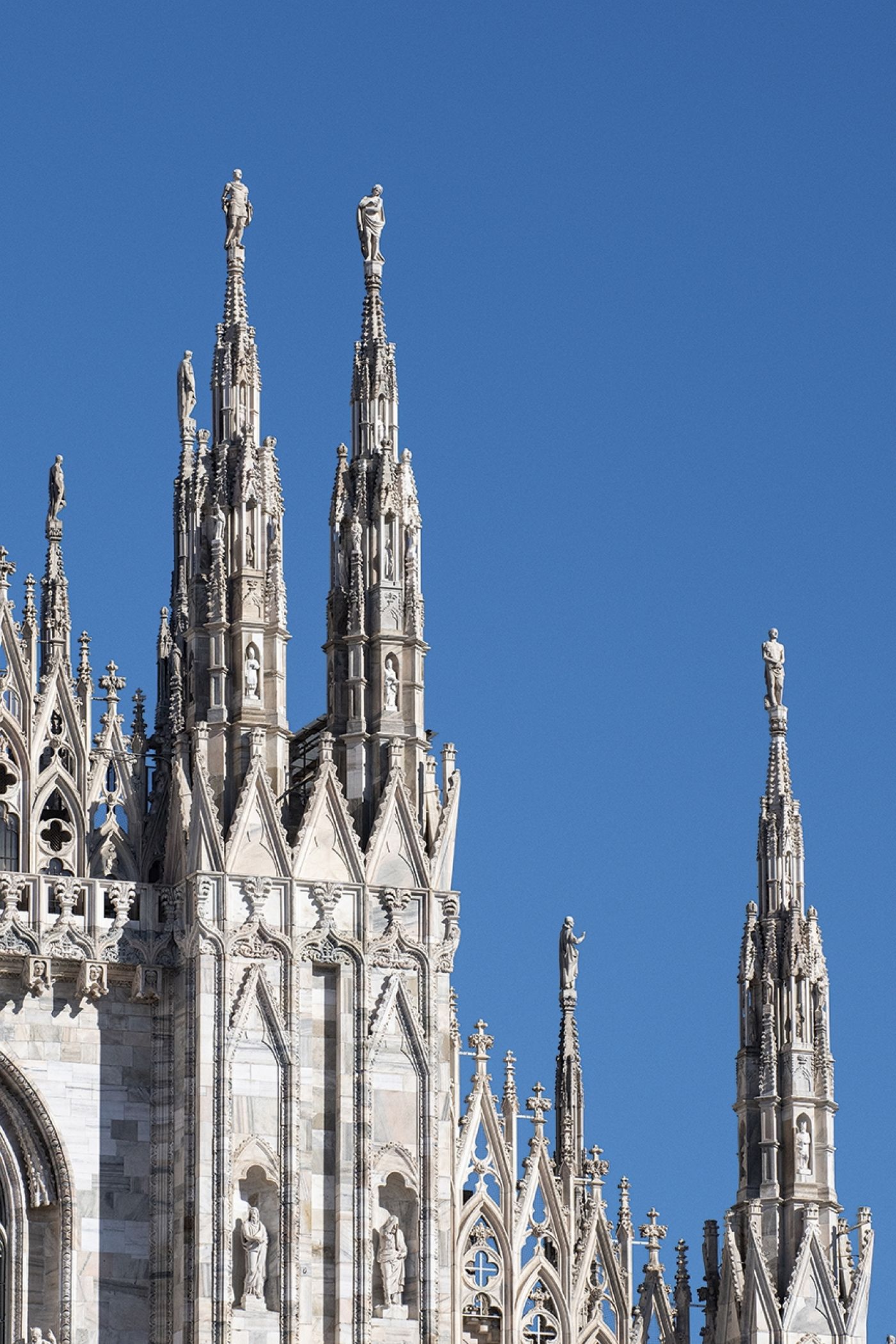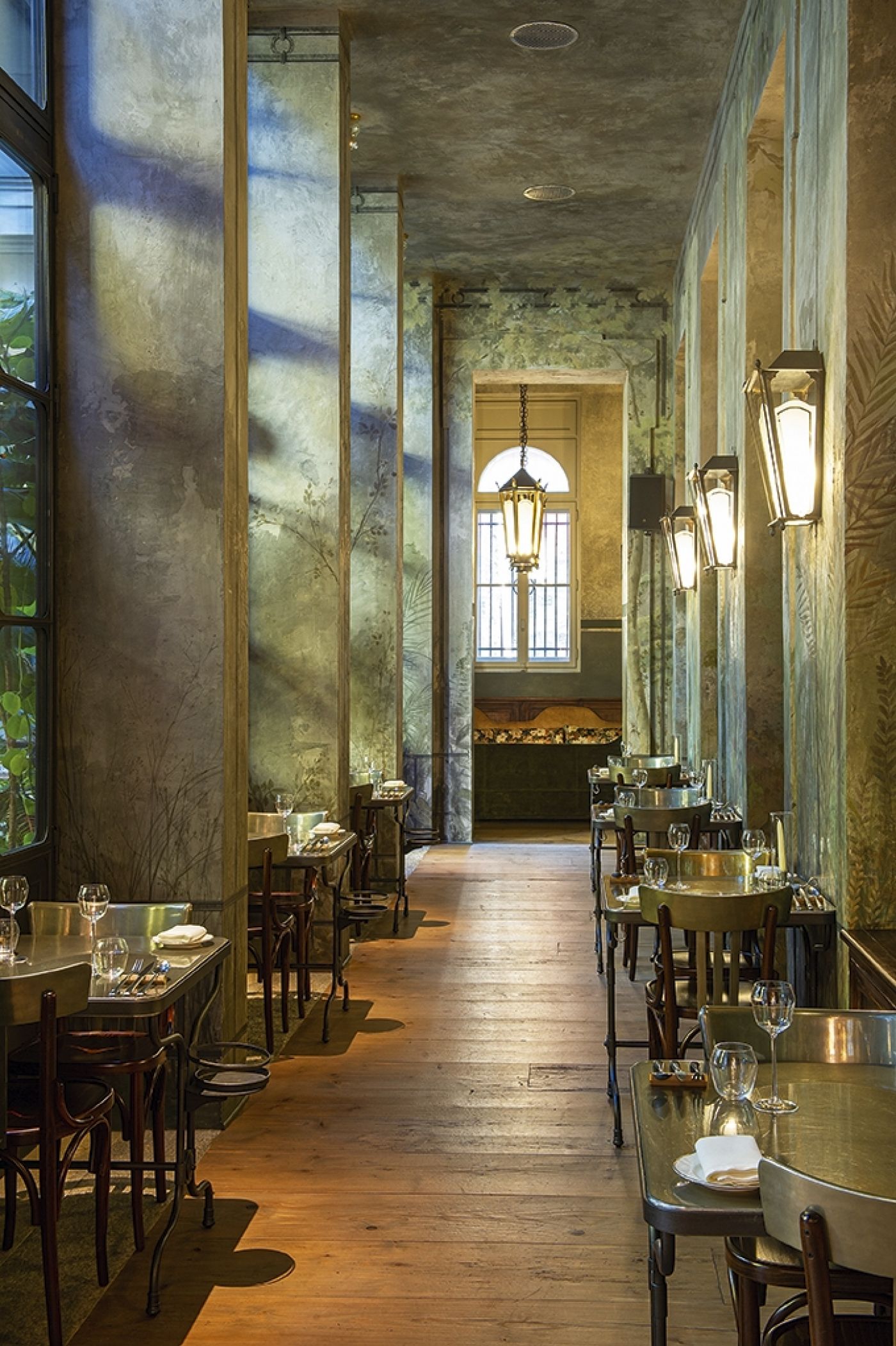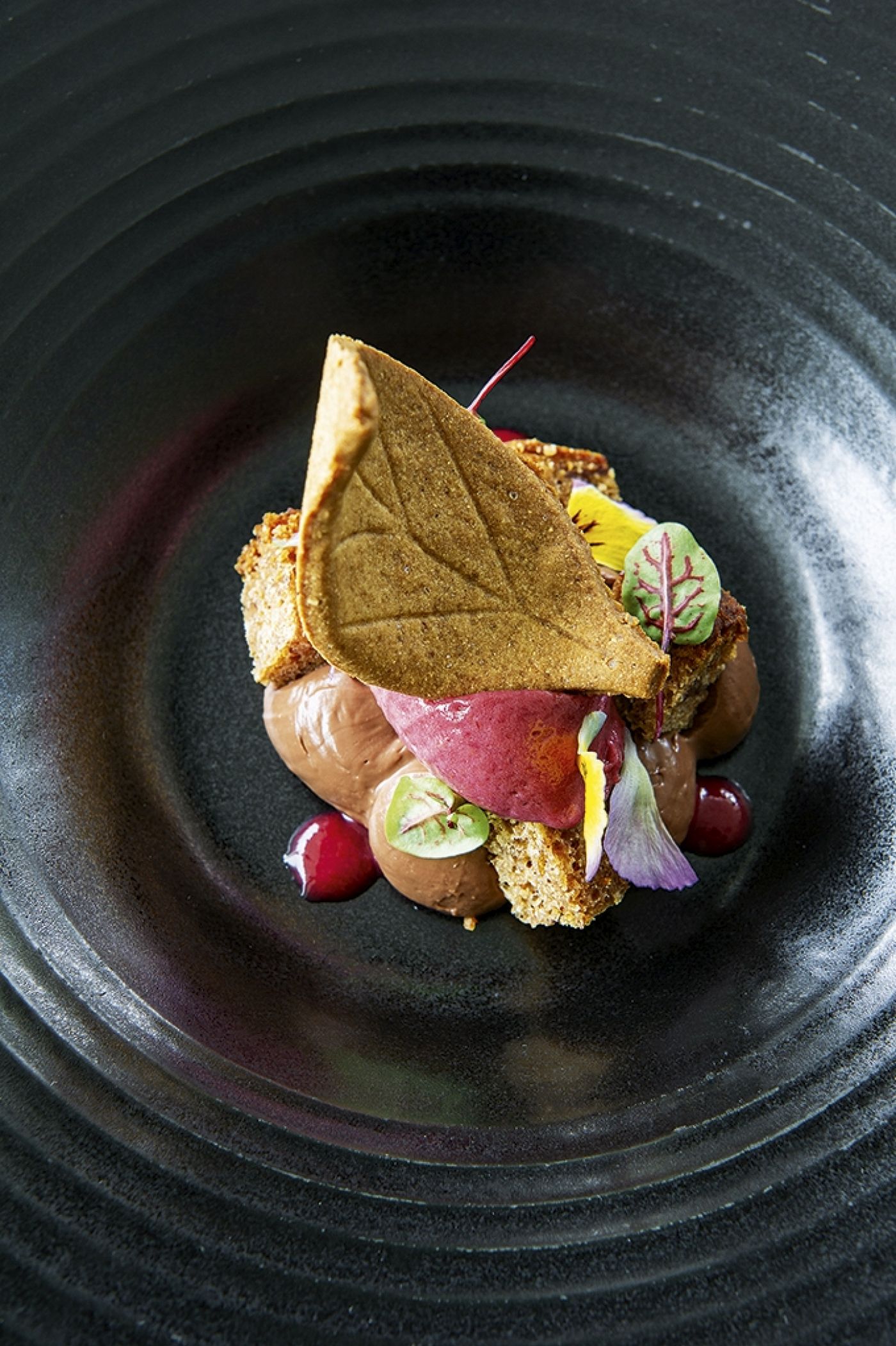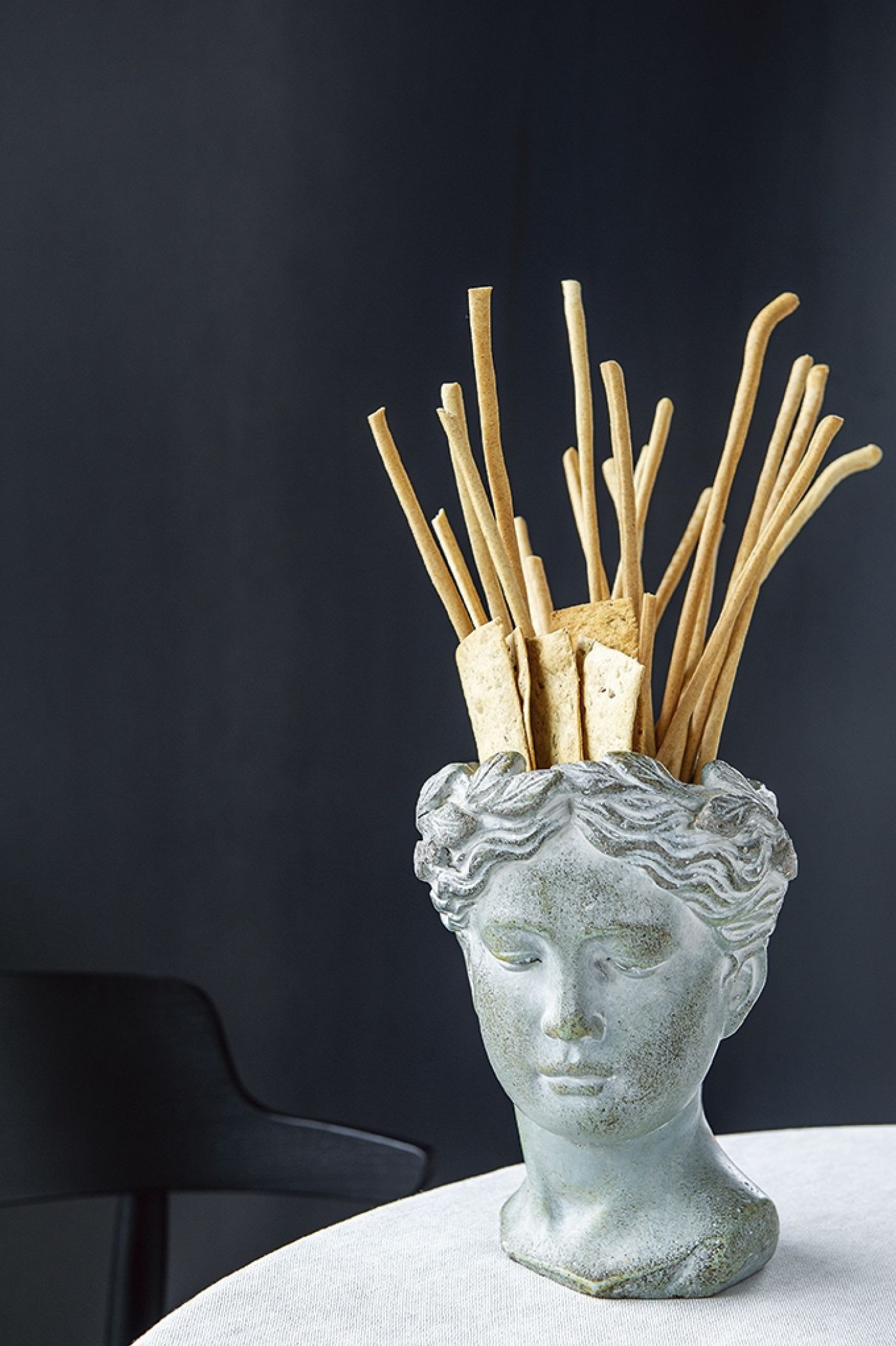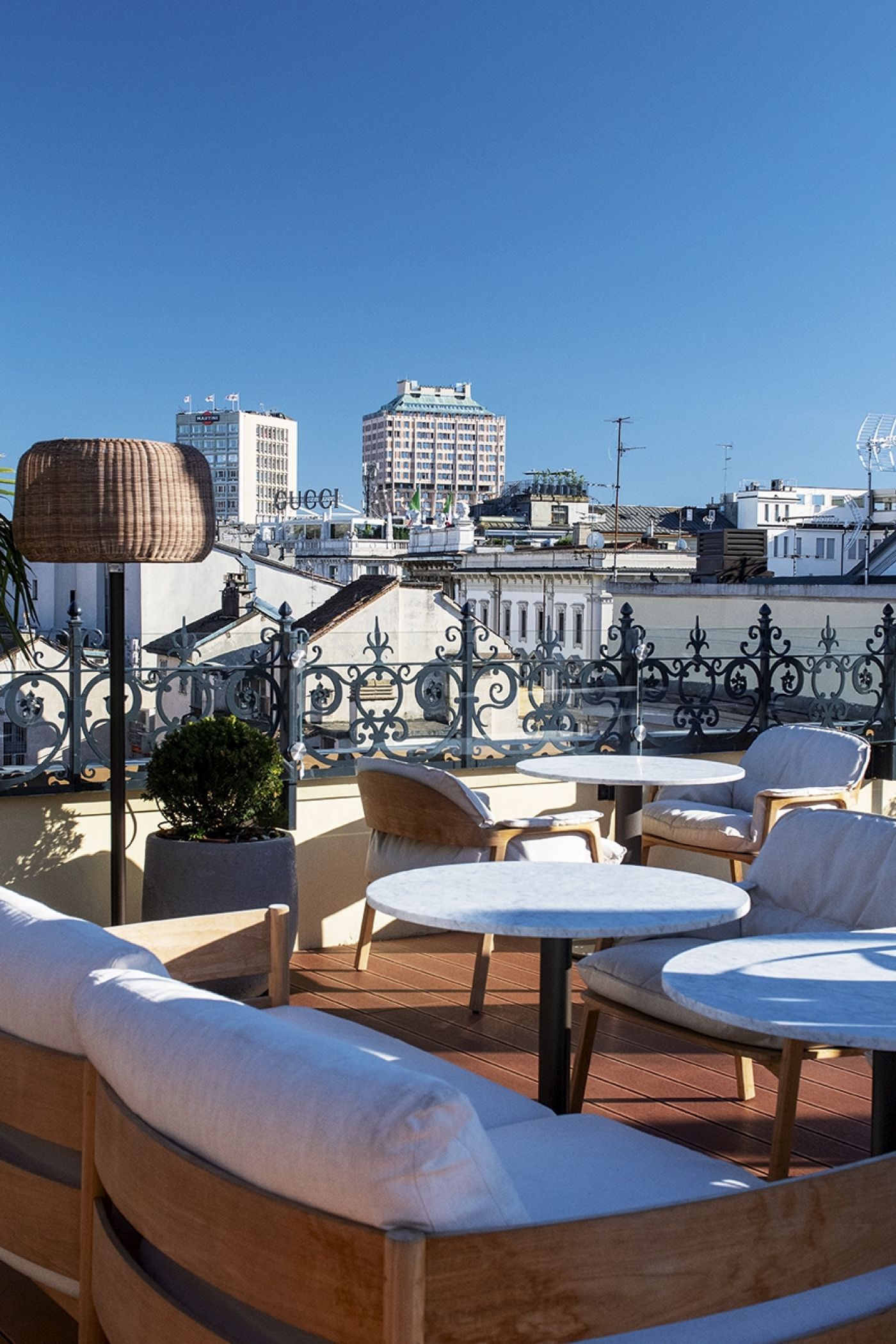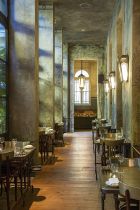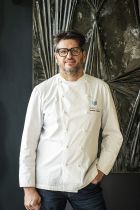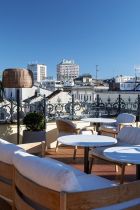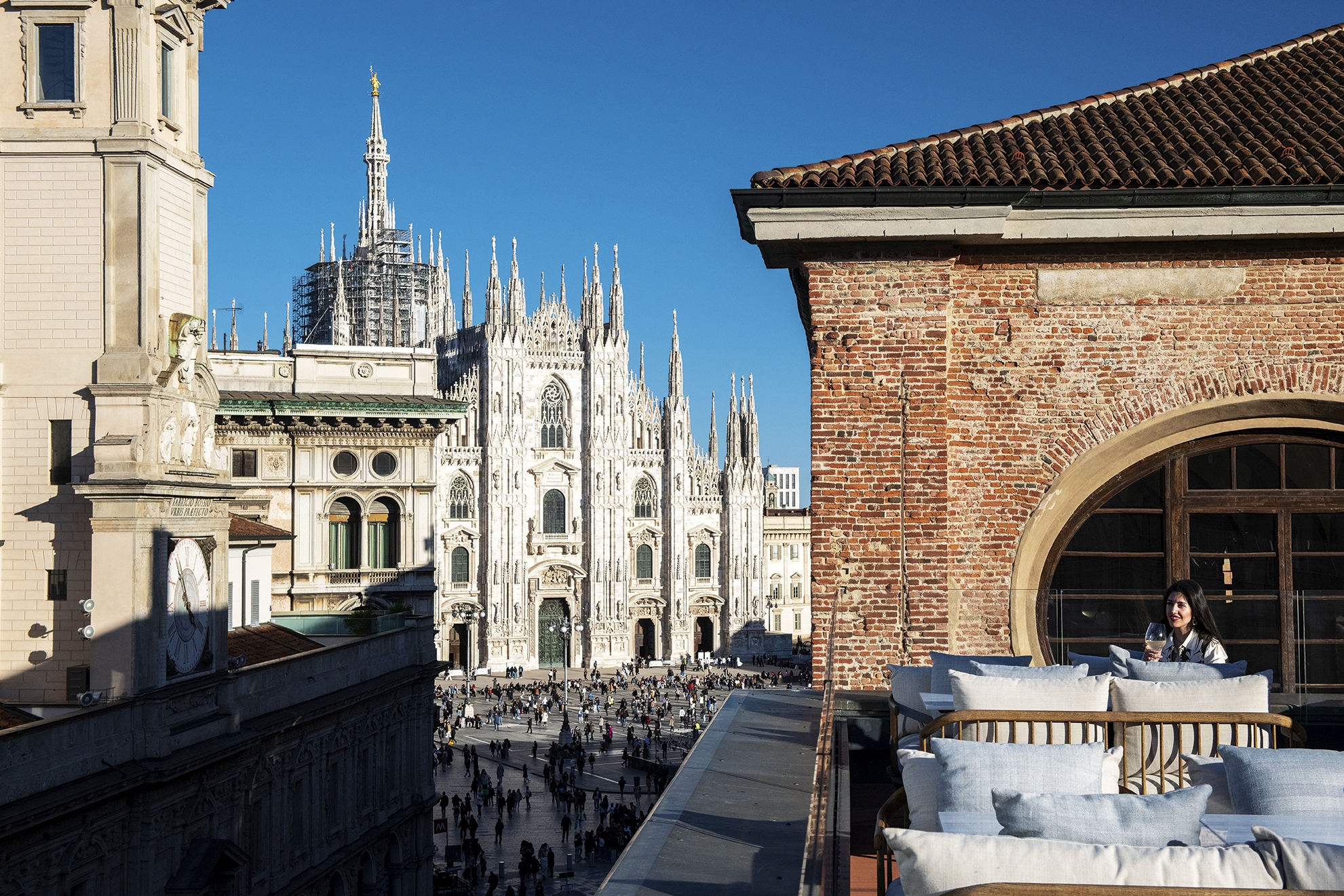
Food and Travel Review
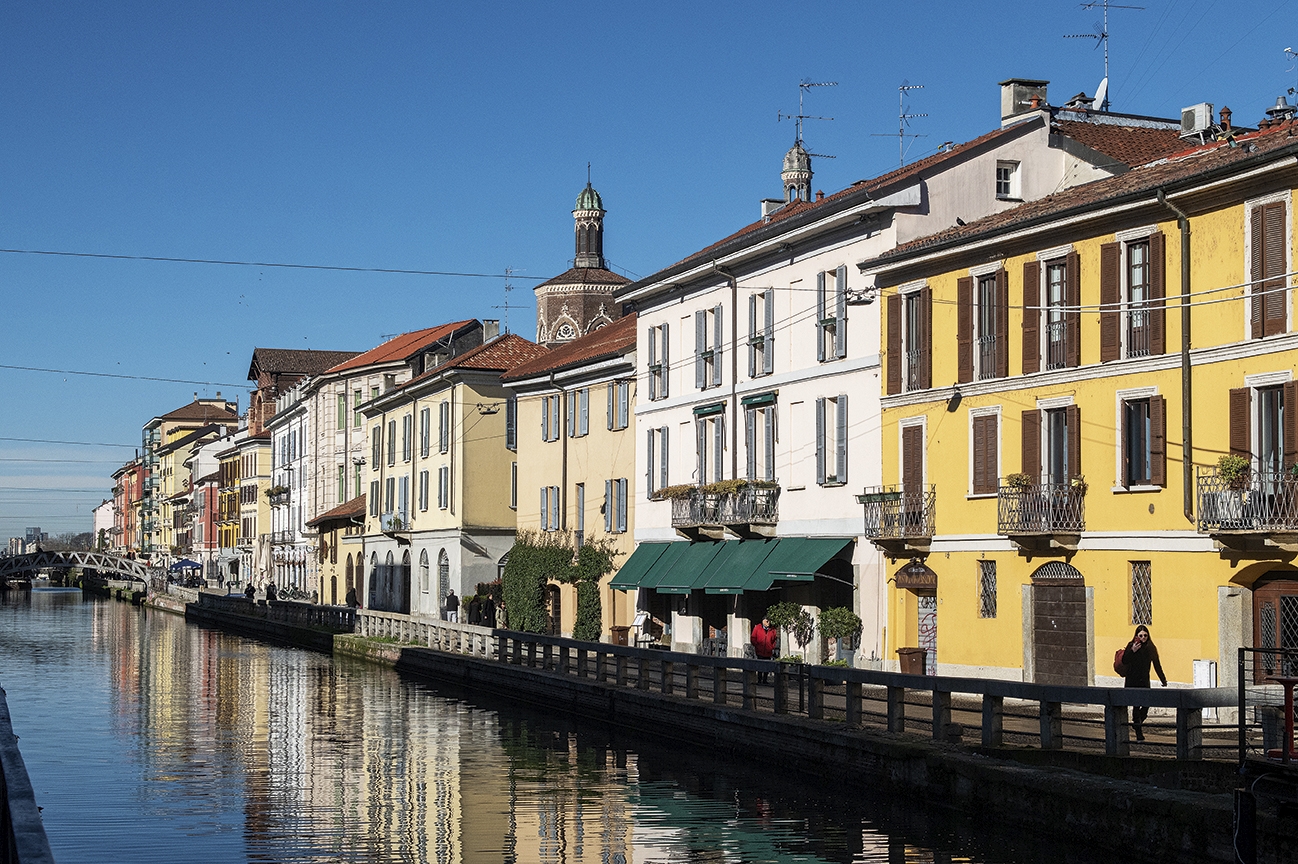
The sun sinks slowly behind the horizon, casting a golden hue on a cluster of skyscrapers of all shapes and sizes. The vista seen from the tenth-floor terrace of Radio Rooftop Bar, cocktail in hand, stretches from the glass dome of Galleria Vittorio Emanuele and the Castello Sforzesco’s brick tower to the ever- growing skyline of high-rise buildings towering over the pastel- coloured palazzi of Old Milan.
Rooftop terraces give you an idea of how much this city has changed. The last big makeover took place in 2015, when Milan hosted a food-focused World Expo. More significant changes are currently taking shape – cutting-edge hotels, new infrastructures and a sustainable metro that connects Linate to the heart of the city in a mere 12 minutes. All in sight of the 2026 Winter Olympics.

North of the centre, Isola is the epitome of the constant transformation that defines the city – in 2009, when chef Cesare Battisti inaugurated his Ratanà restaurant there, the neighbourhood was a very different place. Starchitect Stefano Boeri had only just begun turning his dream of uniting big city life and urban reforestation into reality, as construction started on the two residential towers of the Bosco Verticale, covered in thousands of shrubs and trees. Fifteen years on, Stefano is a key figure behind Forestami, an urban-forestry project that has already planted over 420,000 trees, with the goal of introducing three million by 2030.
‘The food landscape is ever-changing too. Before the Expo there were 2,400 eating places. The number has surged to over 4,500,’ explains Cesare, perched at the marble counter for lunch. He contributed to the cause himself, having opened two more restaurants – Remulass, with partner and sommelier Federica Fabi, and Silvano, in the buzzing district of NoLo (North of Loreto).
These days Ratanà’s art nouveau building lies right below a cluster of designer towers, surrounded by the verdant geometries of the Biblioteca degli Alberi (Library of Trees). A happy coincidence indeed. Not only is Cesare a bit of a farmer in his soul, but he has also been a strong advocate for the urban farming movement.

According to stereotypes, ‘Milan’ and ‘farming’ should not be in the same sentence. The numbers speak for themselves, though; almost 3,000 hectares of Milan’s territory are dedicated to agriculture – 16 per cent of its total surface. Broadening the field (no pun intended), the numbers are even more interesting.
‘The Parco Agricolo Sud is a huge agricultural area that forms a sort of green horseshoe around Milan,’ explains Cesare. ‘Over 48,000 hectares and more than 150 producers and cascine (farms) automatically turn Milan – and its territory – into the first agricultural city in Italy. That’s also where we mostly stock up from.’ His environment-conscious approach is refreshingly rhetoric-free. ‘The word “sustainability” has been overused and has almost lost its meaning,’ he continue. ‘I believe it’s more important to discuss respect and fairness – for the earth, the produce we consume, and the people involved, be it farmers or customers. We are committed to promoting a healthy approach towards food among those who sit at our tables. That doesn’t mean writing calories on the menu. It means educating them to get their greens locally and seasonally. It means teaching your kids the significance of waiting for strawberries until they are in season in May. If ideas and techniques were travelling more and goods were travelling less, we’d live in a much better place,’ he smiles while dishing out two generous portions of risotto alla vecchia Milanese. At once, the delicate aroma of saffron invades the nostrils. The golden colour of this spice has been intimately connected to the history of Milan for the past 400 years – its radiant hue has been used to colour anything from food to the stained- glass windows of the Duomo. Cesare’s risotto with bone marrow, gremolata (a lemon zest, parsley and garlic condimenent of sorts) and roasted meat sauce is unbeatable in town: creamy and buttery, thanks to top-quality mountain butter, with an addictively soft texture. For a Milanese, this is comfort food at its best.
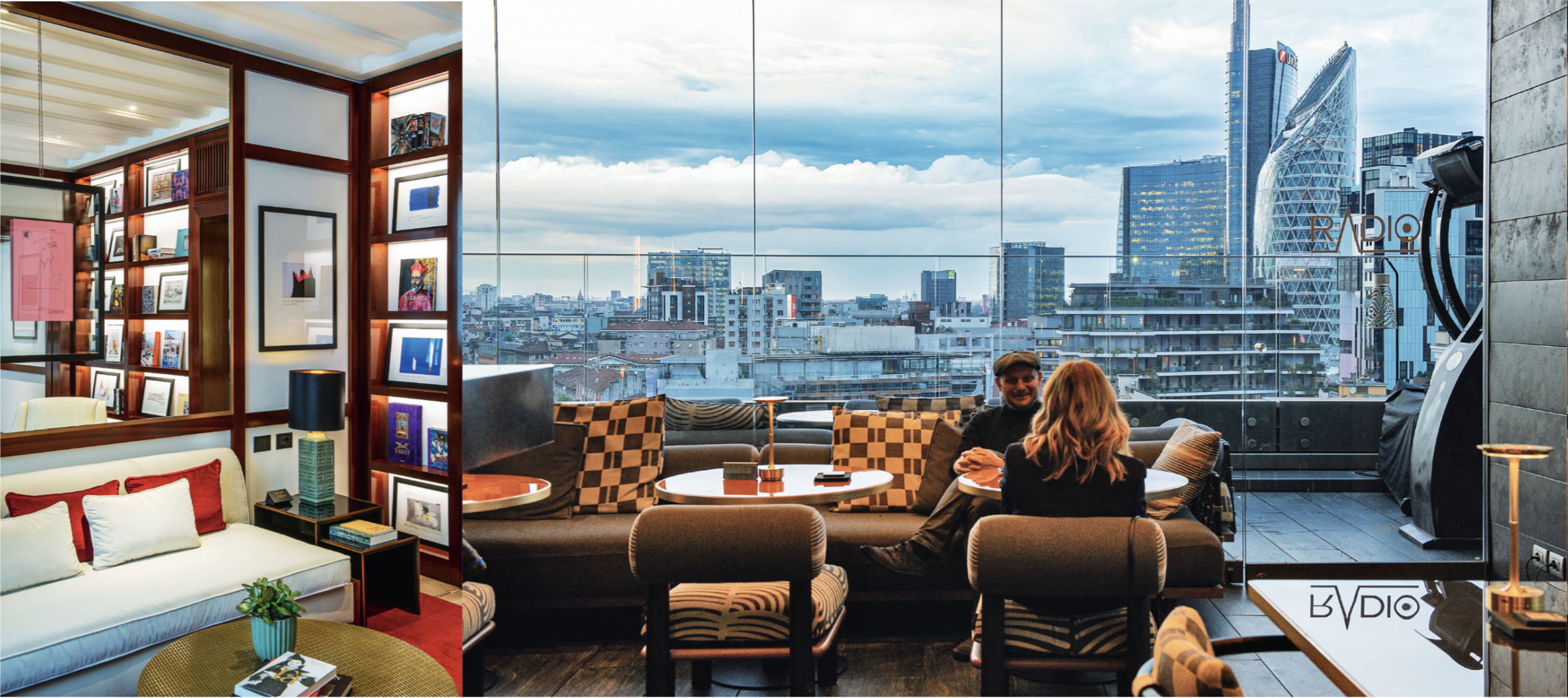
‘We need awareness in this job,’ Cesare concludes. ‘We are the children of the farmers who, due to lack of knowledge, contaminated the groundwater with atrazine. We need to promote generational change in agriculture; we need young farmers with a degree.’
Marco Guzzetti, class of 1996, is one of them. ‘I don’t see myself as a chef or an entrepreneur. I am a farmer, and happy to be one,’ he declares with a shy smile as he holds open the door to his new Via Stampa restaurant, tucked in a quiet street off the shopping hub of Via Torino. ‘Understanding food production is essential in understanding food itself. By growing your own food, you become familiar with its hurdles – the challenges of the climate, the difficulties of having a poor harvest.’
Marco’s French-looking bistro marks the latest accomplishment in a very dynamic career that began at the age of 21 when, still a student, he established a 5.5ha azienda agricola in the region of Liguria, producing wine and olive oil with his wife.
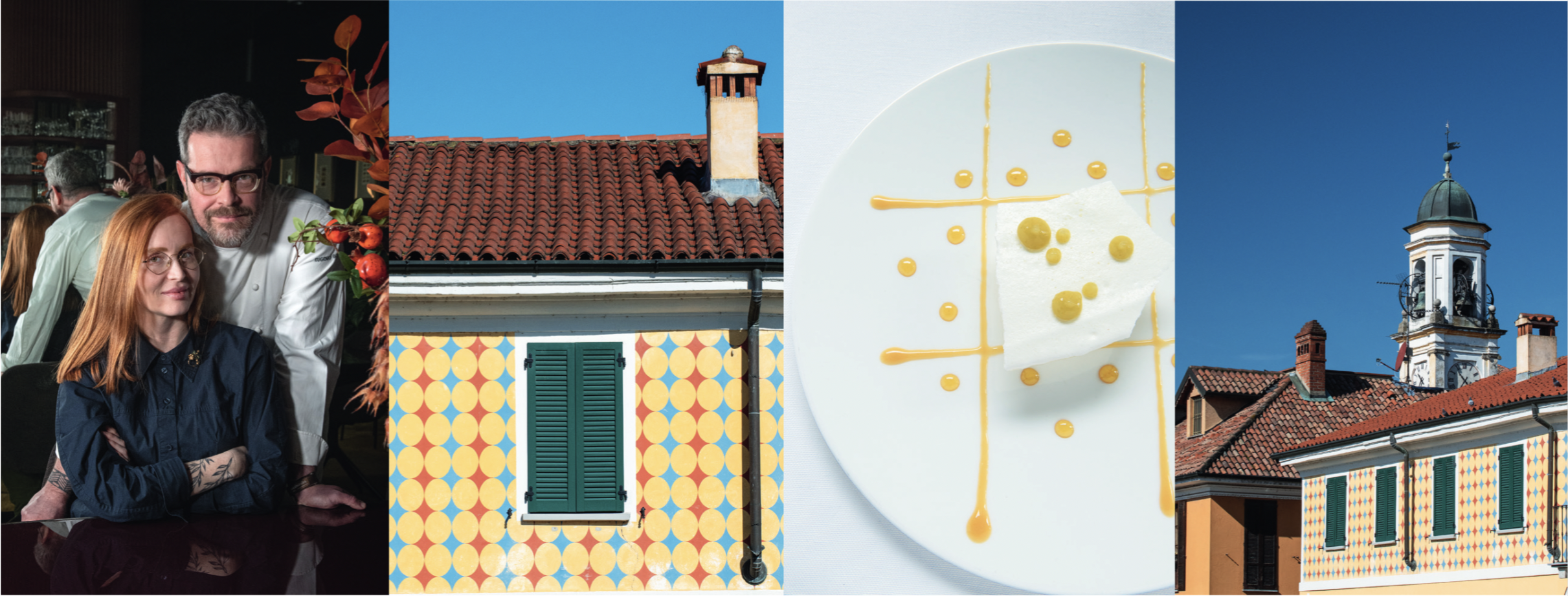
‘I wanted to make a significant change in my environmental impact, while also doing something that could help or inspire others. Practically speaking, this involved breathing new life into barren plots of land through regenerative agriculture, converting them into healthy and productive fields.’
Marco is also a firm believer in the social value of farming, happily chatting about it over a steaming bowl of delicate tortellini in brodo, served in the lightest broth and with a pleasant crunchiness at the seal. They come from Tortellante, a Modena-based association with the support of legendary chef Massimo Bottura, where young people with autism are taught to make sustainable, handmade pasta and given a concrete work opportunity. Marco’s supplier list also includes organisations such as Madre Terra, a Lombardy-based cooperative employing immigrants.
‘I understand the curative power of agriculture,’ says Marco. ‘It brings you closer to the natural rhythm of nature, it rebalances you – even more so when disadvantaged groups are involved.’ The food on offer accurately reflects this practical approach, resulting in very strong, distinctive flavours, be it the addictive mondeghili meatballs or the uber-traditional cotoletta alla Milanese cutlet, everything is pretty much like Nonna’s food. And it never disappoints.
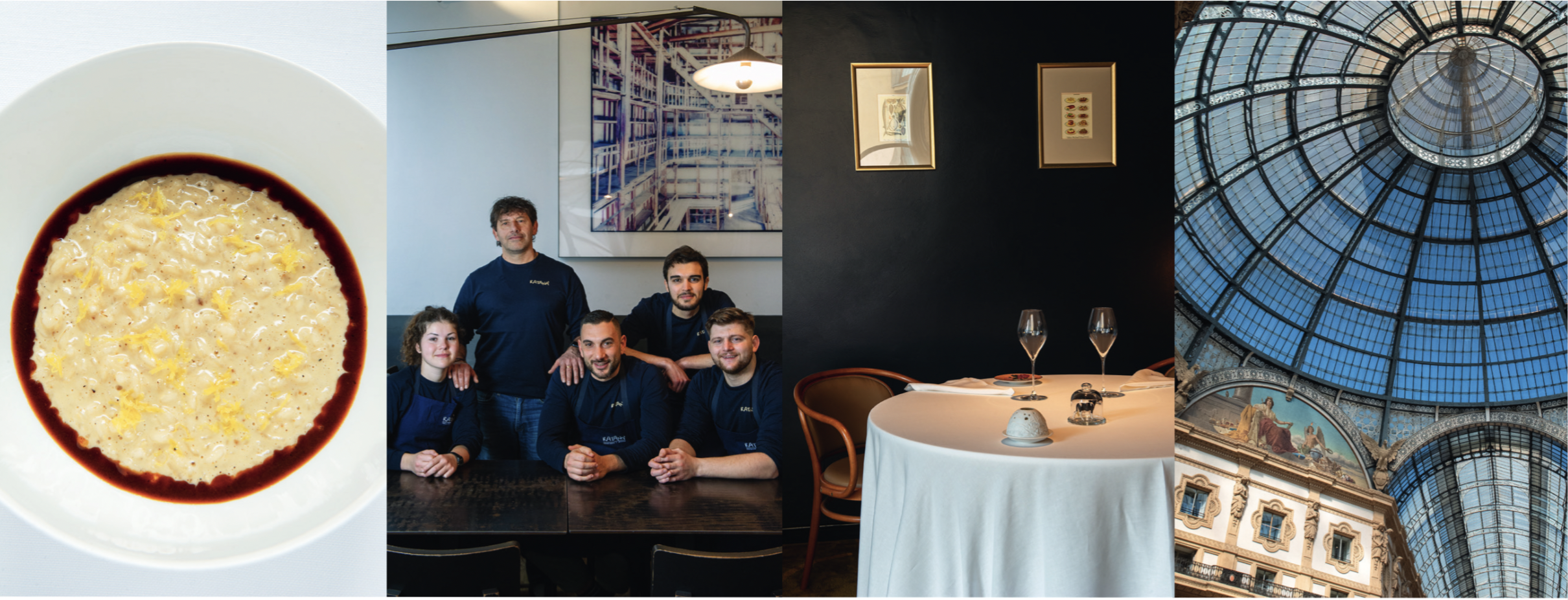
A brief walk takes you back into the now brimming-with-tourists centro (still a bit of a novelty for the Milanese, accustomed to their city being referred to as ‘cold’, ‘grey’ and ‘industrial’). This is where most head-spinning changes are taking place. Majestic restoration projects, such as hotel openings, return iconic locations to the city.
At the end of 2022, Europe’s oldest seminary was reborn as Portrait Milano, the new Ferragamo-owned hotel. Its impressive 17th-century courtyard, framed by a double-colonnaded loggia, was turned into Piazza del Quadrilatero, a brand-new public square in the heart of the fashion district. A stone’s throw from the Duomo’s gothic pinnacles, Álvaro and Adriana Sans from ASAH Studio have breathed new life into the majestic architecture of Palazzo Cordusio (former Palazzo Venezia). Inaugurated last December, it immediately became one of the city’s fanciest hotspots.
The urban greenhouse of Giardino Cordusio, the Italian cocktail bar in the hotel’s courtyard, is the place to observe the ritual of the aperitivo, possibly the most quintessential Milanese experience. The unique mineralisation of their amphora-aged negroni al fresco, masterfully prepared by ex-Connaught Bar mixologist Daniel Jonathan Selby’s team is a triumph.
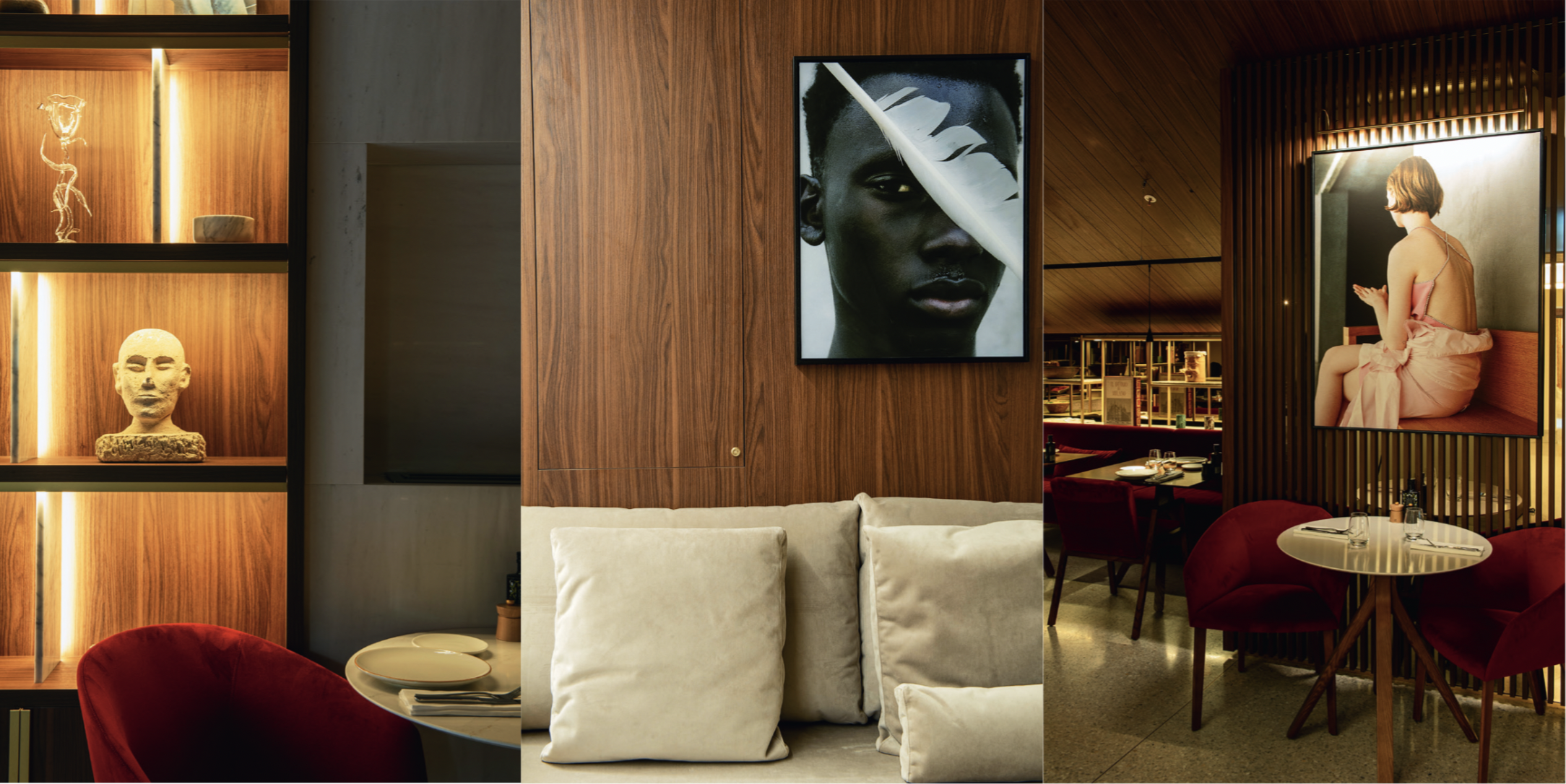
Snag a spot on the wooden seats of tram no. 2 – the constant rattle of the wheels is one of those sounds that affectionately defines Milan, an indulgent concession to nostalgia in a city that enthusiastically embraces the future – and ride it all the way to the Bovisa district. At the northern end of the line, this once factory- filled area has been turned into a hub for creativity and design. This is where Tommaso Arrigoni relocated his famed Innocenti Evasioni restaurant a year ago and the new location granted him the opportunity to make his idea of ethical, zero-waste cuisine even more concrete. Most importantly, by having a vegetable garden right on his doorstep.
‘This orto was essential for us,’ he explains. ‘We now produce a significant amount of greens on our premises. It accounts for 50 to 70 per cent of our daily necessities, and we have plans to expand it further. The menu changes according to what’s in the garden, not the other way round,’ he chuckles as he points out the different lettuce heads, cabbages and aromatics. Two beehives on the opposite side produce a yearly yield of 50kg honey, making Innocenti Evasioni the pioneering restaurant with its own urban beekeeping project. Not just that – leftovers are turned into compost for the neighbours’ vegetable garden – the Politecnico di Milano, Italy’s largest technical university. Even bread scraps are transformed into beer at Ibrida, a local microbrewery.
The restaurant also sources about 35 per cent of its energy from photovoltaic panels, energy-efficient solutions and state-of-the-art domotics. A true ‘island’ of sustainability, as well as living proof that urban oases are possible.
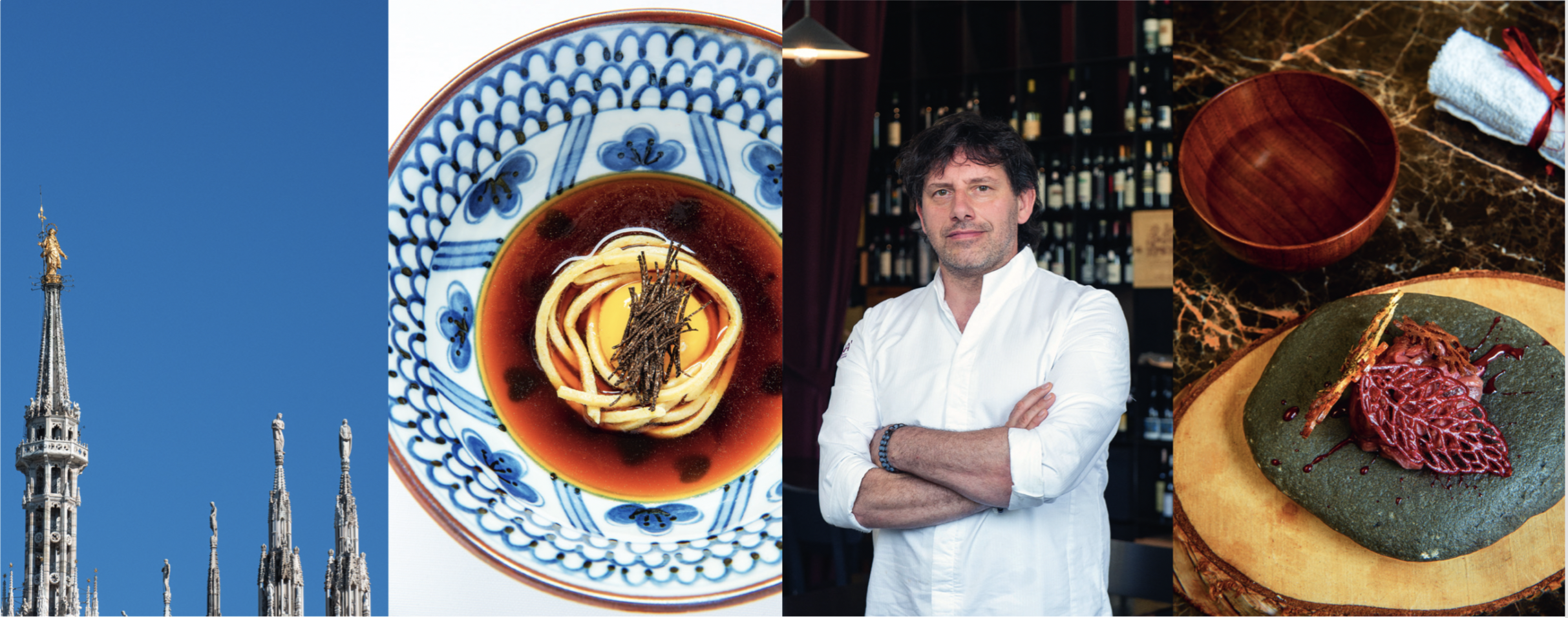
Islands, of course, can also be metaphorical, poetic places. If Milan has a definite agricultural vocation, Dutch-Italian Eugenio Boer tries to evoke the emotional side of it, bringing back the concept of the old-time, country restaurant right in the middle of the city. Together with wife Carlotta Perilli, he opened Bu:r in a quiet street in the lively Ticinese district. ‘What is a restaurant? A place you go to feel good, be welcomed and pampered,’ he says. Our customers are important to us – as are our suppliers, who we have developed direct relationships with, without any involvement from third-party distributors,’ he says offering a seat at a table in the Sixties-inspired dining area.
In the kitchen, local produce is combined with modern techniques and contemporary recipes. Tradition becomes innovation. Often born out of personal memories, Eugenio’s dishes are beautifully evocative and aim to create an immersive experience. Such is the case with Il Cervo e la sua Evoluzione (The Deer and its Evolution), a dish that has evolved and changed with him for the past 12 years.
‘It is a homage to my time in the mountains with Norbert [Niederkofler, the South-Tyrolean, three-Michelin-starred chef]. It is a memory of an evening mountain drive when I suddenly came across a herd of deer gathered around a bend in the road – many and enormous, some boasting elaborate antlers. I slowed down until I stopped. The image of them in the glow of the headlights remained ingrained in my mind and inspired the creation of this dish,’ he explains. ‘It’s all about being aware,’ he says with a nod. Respectfully covered in leaves made of rue, liquorice and raspberry, raw deer fillet is presented on a stone, at a body temperature of 37 degrees. A sublime tribute to ethical hunting, the kind that arises from a genuine need, and ultimately a celebration of the deer’s existence rather than its demise. He encourages diners to eat it with their hands – a bowl filled with an infusion of pine resin is offered alongside. As soon as your fingers touch the water, its captivating scent fills the air, evoking images of the great outdoors. You may be in the middle of Milan, yet you are suddenly taken somewhere else.
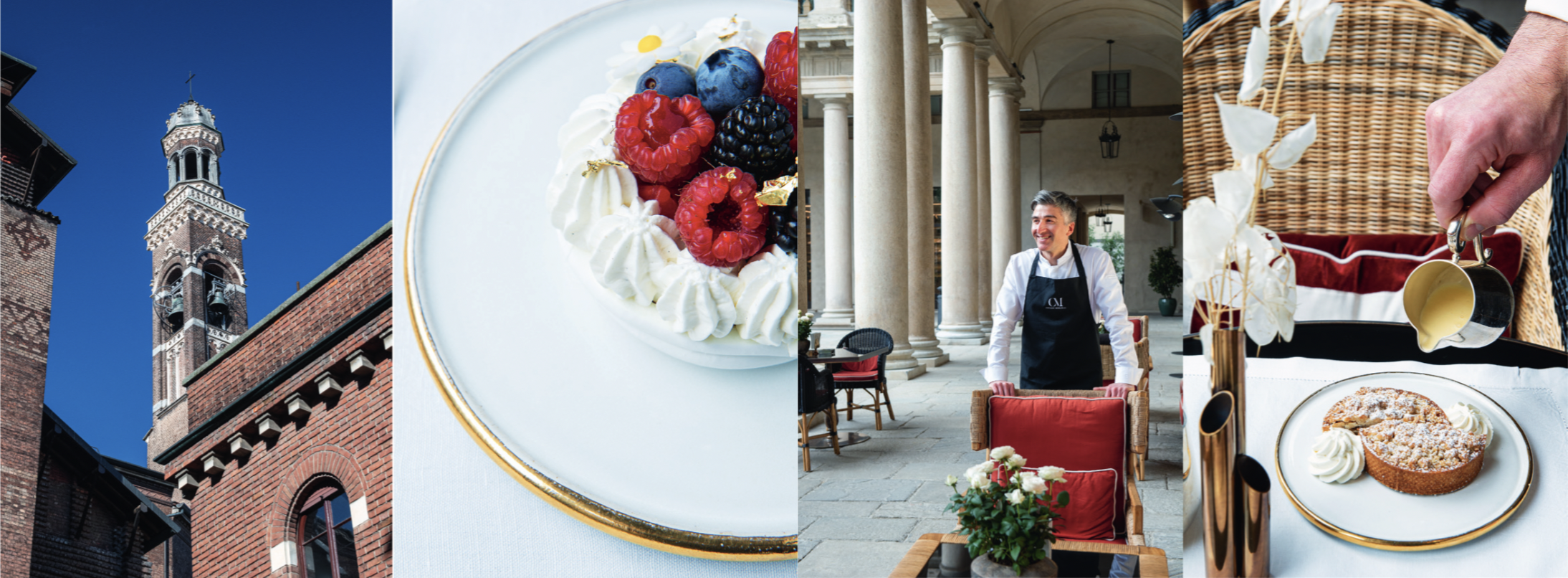
DON'T MISS
Cascine Milan’s agricultural vocation is evident in the city’s many farms, traditional to Lombardy, in the outskirts of the city. Thanks to the enthusiasm of the younger generations, many have been requalified and are experiencing a revival. Such is the case with Cascina Guzzafame, which dates to the beginning of the 1700s and sits in the middle of a 75ha property near the postcard-pretty town of Gaggiano and within the Parco Agricolo Sud. Devotedly managed by Francesca Monti, it is the perfect place to stock up on house-produced goods such as meats, Carnaroli rice, fresh fruit and veg and jams – and their excellent lactose- free cheeses. There is also a restaurant, open for lazy lunches at weekends (book ahead). 5-course set lunch, £34pp. Cascina Guzzafame, Località Cascina Guzzafame, Gaggiano, 00 39 331 638 3207, cascinaguzzafame.it
Chinatown Milan’s dynamic quartiere cinese has been a permanent feature of the area for over a century. Centred on the pedestrianised Via Paolo Sarpi, it offers a variety of Asian cuisines, from dim sum restaurants to teahouses and street-food stalls. The area gets particularly busy at weekends and in the evening, when people eagerly queue up for their beloved dumplings and baozi buns.
Exhibitions and museums There’s a cluster of unusual cultural highlights only a short walk away from Chinatown. Fabbrica del Vapore, a former industrial complex from the early 20th century, has been converted into a cultural centre, and an interesting calendar of exhibitions, many of them free, makes it a worthwhile stop. Next door, pay a visit to the Cimitero Monumentale, the final resting place of the illustrious Milanese of the past, which is a veritable open-air museum. Design enthusiasts should also make time to visit the ADI Design Museum, showcasing the iconic objects that have shaped the world of international design. Entry £12.80. fabbricadelvapore.org adidesignmuseum.org
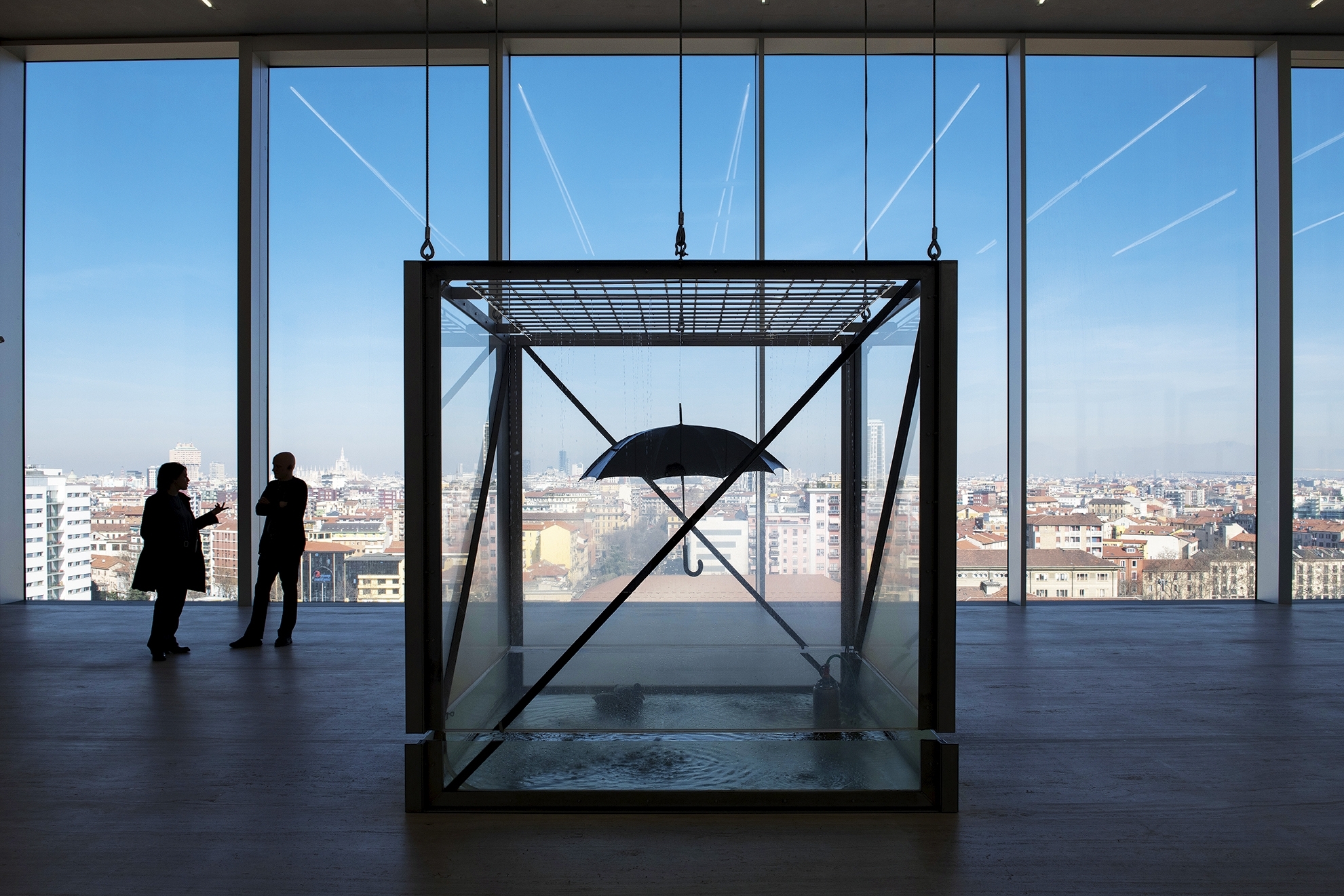
Fondazione Prada Seven restored buildings and three new structures have changed the face of a 1910 gin distillery in the south of Milan, transforming it into a multi-level exhibition space. Aside from the bold artwork inside, which features works by the likes of Damien Hirst, Jeff Koons, Anish Kapoor and Mariko Mori, the outdoor spaces offer some incredible visual perspectives. Don’t forget to stop for a coffee and a slice of torta rosa (from iconic Pasticceria Marchesi) at the in-house Bar Luce, designed by Wes Anderson. Its pastel-coloured Formica furniture, retro jukebox and pinball machines make it the ultimate Instagram-perfect place. Entry £12.80. 2 Largo Isarco, 00 39 02 5666 2166, fondazioneprada.org
Local markets Covered or open-air, Milan’s markets are a great chance to discover its neighbourhoods while browsing for everything from groceries to designer clothes. The extensive Via Fauché street market is the place for bargain hunting (Tue, Sat) and for food, browse any of the many Municipal Markets – small, covered squares with shops. The latest are Mercato Centrale Milano, housed in the central railway station, and Mercato Isola in Piazzale Lagosta. Right by the former port, the Mercato Comunale della Darsena is the spot to have a coffee or a glass of wine by the water. On the last Sunday of the each month, nearby Naviglio Grande is transformed into thriving antiques market, the Mercatone dell’Antiquariato.
Where to stay
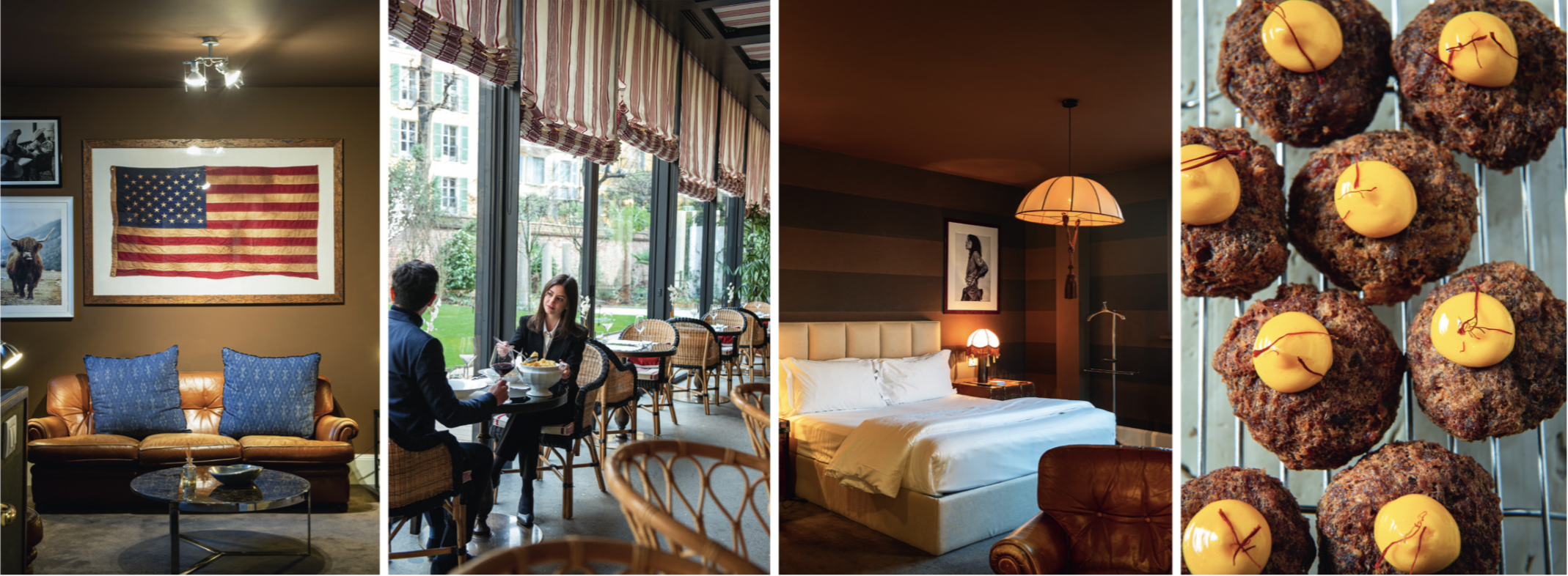
Aethos Milan Ideally located in the vibrant Navigli district of the city,
this is an address for the savvy traveller. Each of the 32 spacious suites
is individually furnished and draws inspiration from the opulent atmosphere of gentlemen’s clubs – think Chesterfields, mahogany tables, curated art and period furniture. Some come with large balconies with views of the neighbouring rooftops. Room 23 boasts a lovely (albeit slightly noisy) view of the Darsena, the historic port of Milan back when the city was a network of canals. In-house facilities include stylish restaurant Zaïa, serving Middle Eastern-meets-Italian cuisine and The Doping Bar, one of the area’s finest cocktail bars. Doubles from £171. 8 Piazza XXIV Maggio, 00 39 02 8941 5901, aethos.com
Avani Palazzo Moscova Milan Newly established in a neoclassical palazzo that once operated as Milan’s first railway station, this is already a favourite with the fashion crowds. Close to the lively nightlife and the boutiques of trendy Corso Como, it offers all the amenities expected of such a location including a state-of-the-art spa, a gym and in-room yoga mats. All-white, understated minimalism defines its 65 rooms, standards are sleek but cosy and the two duplex suites have balconies overlooking the ever-changing Garibaldi district. Various experiences can be booked depending on the season, such as supper clubs, a tour in a vintage Fiat 500 or bike outings. The Forte seafood restaurant completes the offer with fish sourced daily from the Tyrrhenian Sea. Doubles from £154.
12b Viale Montegrappa, 00 39 02 2906 0312, avanihotels.com
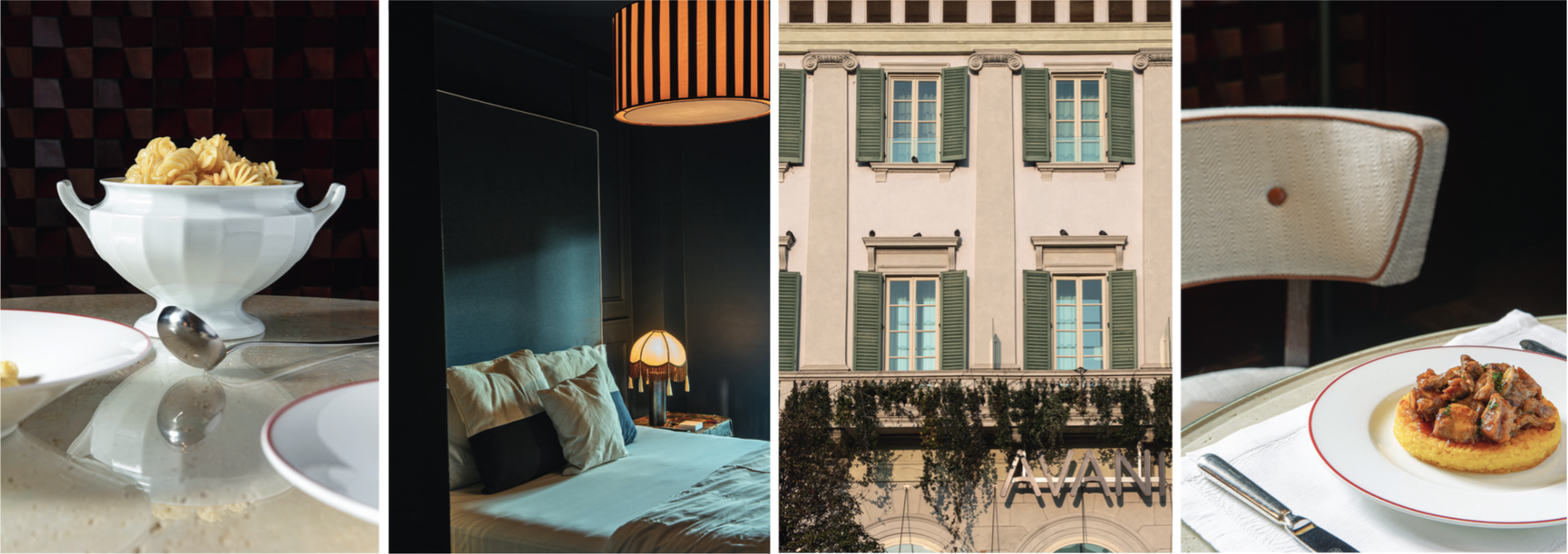
Palazzo Cordusio Gran MeliáAfter meticulous restoration, this iconic 19th-century palazzo has been converted into a luxurious five-star hotel. Historical splendour meets contemporary design, with hand-selected furniture and lamps by the likes of Gio Ponti, Vico Magistretti, Miguel Milá and Patricia Urquiola on all five floors. The 84 rooms (of which
29 are suites) feature exquisite handmade Rubelli textiles framed as precious artwork – a reference to the Venetian heritage of the place. On the 4th floor, the Asian delights of Sachi restaurant are also open to non- guests – reserve a table outdoors for a one-of-a-kind view of the Duomo. Another restaurant, Isola, dedicated to the cuisine of southern Italian islands, has a stunning top-floor terrace. Giardino Cordusio cocktail bar and a spa with indoor pool complete the scene. Doubles from £772.
2 Piazza Cordusio, 00 39 02 4959 7294, melia.com
Portrait Milano Another option, if you want to splash out on a night in one of the city’s prestigious spots, is the former Archiepiscopal Seminary, right at the core of the fashion district. Inside, it’s all about tailored refinement: its 73 roomy suites combine the elegance of mid-century Milanese residencies with the expert craftsmanship of Tuscany – details include leather handles and Florentine rattan boiserie. Everything oozes elegance, from the enormous Carrara marble-clad bathrooms to the dressing rooms studded like leather trunks. Should you need a break from the fast-paced city life, the beautifully designed underground spa boasts a low-lit swimming pool and a wide range of treatments from the Longevity Suite. Doubles from £802. Corso Venezia 11, 00 39 02 3679 95800, lungarnocollection.com/portrait-milano-hotel
Travel Information
With innovative architecture, an ever-expanding design scene and world- famous fashion houses, Milan – in northern Italy’s Lombardy – is every inch the country’s most avant-garde city. Currency is the Euro and time is one hour ahead of GMT. Flight time from London is around two hours and the city is served by three airports – Malpensa, Bergamo and Linate.
GETTING THERE
Ryanair fly direct from London Stansted to Bergamo and Malpensa. They also have flights from Manchester airport to Bergamo. ryanair.com EasyJet offer flights to Milan from most major UK airports. easyjet.com
GETTING AROUND
Milan has an extensive public transport system. With over 100 stops, the metro is the fastest way to get around. Alternatively, the tram network allows for sightseeing while travelling overground. atm.it
RESOURCES
Yes Milano is the official promotional website for the city and it’s packed with up-to-date information to help you plan your trip. yesmilano.it
Where to eat
Prices are for a three-course meal for one, excluding drinks, unless stated
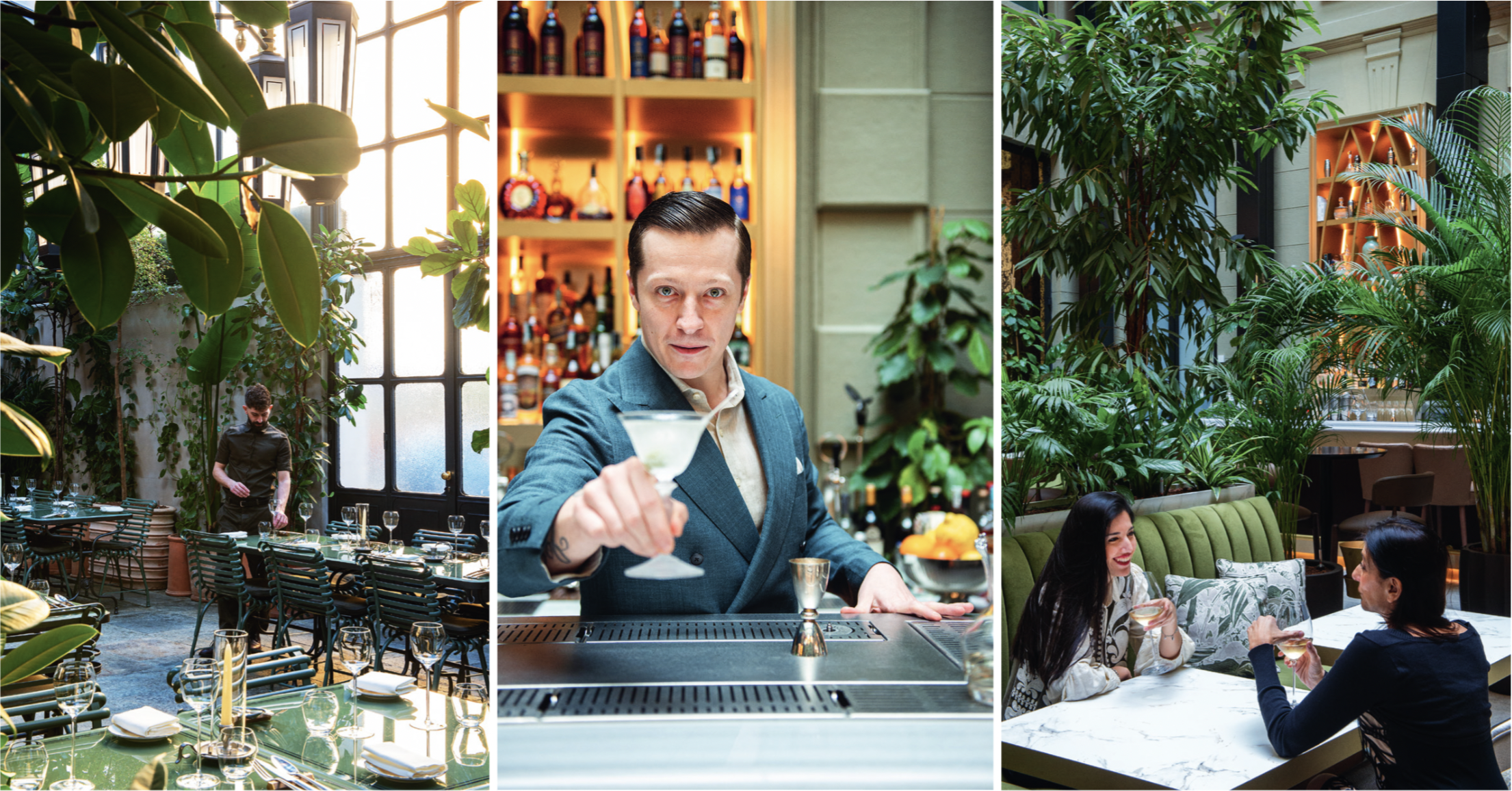
10_11 Housed within Portrait Milano (see Where to stay), this is an all- day affair with a vaulted colonnade and lush secret garden. Chef Luigi Cinotti presents classic Milanese dishes such as sautéed rice with bone marrow ragù and gremolata and Piedmontese staples like a delicately creamy vitello tonnato. Try the renowned 10_11’s white pasta, a simple yet delectable pasta in bianco that uses 36-month-old Parmigiano Reggiano in its entirety – a clear example of the restaurant’s desire to minimise waste. If you have room, indulge in one of the excellent desserts by pastry chef Cesare Murzilli. From £55. Corso Venezia 11, 00 39 02 3679 95850, lungarnocollection.com/10-11-restaurant
Bu:r A taste of tradition with an ultramodern spin and an emphasis on local ingredients and small-scale suppliers. Signature dish Mariconda Soup as Ramen sees the little-known mariconda soup revisited with Asian technique. The Oriental flavours are recreated exclusively with Italian ingredients, such as thinly sliced black truffle that mimics nori. Chef Eugenio Boer’s citrusy fresh version of Nino Bergese risotto, dedicated to one of the masters of Italian cuisine, is a tribute to his native Liguria. Among the desserts, the rimedio della nonna is a homage to his grandmother’s remedy for flu: milk, laurel leaf, cognac, chestnut honey and lemon. 9-course tasting menu from £94pp. 22 Via Mercalli, 00 39 02 6206 5383, restaurantboer.com
Giardino Cordusio Set on the ground floor of Palazzo Cordusio (see Where to stay), this classic Italian cocktail bar is its pièce de résistance. Everything within its lush interior garden exudes la dolce vita – velvet sofas, golden mirrors, waterfall chandeliers and a 12m mahogany counter. Created in partnership with award-winning bartender Giancarlo Mancino, it features an impressive cocktail list: order the negroni al fresco, which is amphora-aged for at least 30 days. Cocktails from £12.80. 2 Piazza Cordusio, 00 39 351 366 7099, giardinobarlounge.com
Innocenti Evasioni A staple on the Milanese food scene since 1998 and now in new, bright premises in the Bovisa district, its sustainable, no-waste practices have been elevated to new heights. À la carte or three seasonal tasting menus available – expect the likes of braised hare-filled ravioli with figs and chocolate, buttery duck foie gras and a beautiful pollen ice cream. 5-course tasting menu £64pp. 66 Via Giuseppe Candiani, 00 39 02 3300 1882, innocentievasioni.com

Radio Rooftop Bar On the tenth floor of the stylish ME Milan Il Duca hotel, this day-to-night rooftop lounge is a favourite with trendsetters. Sunset is the best time to enjoy its two outdoor terraces, taking in breathtaking views over the Porta Nuova and CityLife district – ideally with a vodka-based ‘apple of my eyes’, with notes of vanilla and cinnamon. Cocktail from £16.30. 18 Via Marco Polo, 00 39 02 8422 0108, melia.com
Ratanà Cesare Battisti’s restaurant is an unmissable address for those wishing to sample Milanese cuisine at its finest. Think irresistible mondeghili meatballs, the must-try risotto alla vecchia Milano – undeniably the ultimate saffron-infused risotto in the city – and cassoeula, a peasant recipe for stew whose bold flavour has been a staple in warming up Milan’s chilly and misty winters. Caterina Poma’s impressive wine list offers a selection of 600-700 mostly natural and biodynamic wines. Book ahead. From £48. 28 Via Gaetano de Castillia, 00 39 02 8712 8855, ratana.it
Remulass True to its ‘small kitchen with roots’ motto, this funky, brightly coloured bistro in bustling Porta Venezia features equally colourful dishes, prepared by Francesco Vitale in the tiny, semi-open kitchen. While not strictly vegetarian, the ever-changing menu is based around vegetables, whether it be it aromatic herbs, roots or legumes (remulass means wild radish). A special nod is given to heirloom varieties such as the ramata di Milano onion or broad beans from Carpino, a Slow Food praesidium from Puglia. The lentil and rice miso soup is a must-try, as is the crunchy Selva egg with pioppini mushrooms and horseradish mayo. Only 25 seats, so book ahead; closed at weekends. From £40. 21 Via Nino Bixio, 00 39 02 5251 7356, remulass.it
Silvano Vini e Cibi al Banco No danger of trends taking precedence over quality at this proper osteria. Opened last September in quirky NoLo, the kitchen relies on a huge oven constantly churning out baked delicacies, either for a full meal or just aperitivo. Bubbly Vladimiro Poma is the undisputed star behind the old-style counter as well as in the kitchen. The atmosphere is informal, and it’s all about the simple pleasures of (fairly- priced) food – the joy of liver pâté with warm focaccia, bread topped with sausage ragù. Carpaccio, tartare and ceviche reveal Vladimiro’s background in Peru at the acclaimed Astrid y Gastón. Small plates from £4.30. 2 Piazza Morbegno, 00 39 02 7219 3827, silvano.superbexperience.com
Sogni Sogni means ‘dreams’ and this pescatarian restaurant housed in a beautifully restored kindergarten from the late-19th century, in the Porta Genova area, lives up to its romantic name. The venue is oneiric indeed – think plush velvet, distressed mirrors, an old-fashioned zinc bar and electronic music in the background. Three very differently styled rooms offer a choice of atmosphere, including one with a long, social table. Chef Gianluca Clerici’s signatures include the must-taste spaghetti with clams and there are plenty of vegetarian options available, as well as aperitivo formulas. Aperitivo with food from £30. 8 Via San Calocero, 00 39 02 4547 2909, sogni.eu
Via Stampa This French-looking restaurant in a former tailoring studio is one of Milan’s most interesting new openings. In the words of owner Marco Guzzetti, the food is ‘agriculture-inspired’ – honest and earthy, cooked the way a grandmother would. The simplicity is deceptive, though, as the dishes are the result of careful research into ingredients and techniques. Same goes for the interiors, where handcrafted tables to marble cutlery rests are all made by skilled artisans. Start with an aperitivo with small bites from the alla vole menu, perfect for sharing, and move on to a full meal: among the primi, try the cappelletti del tortellante in brodo, served in the most delicious broth. From £36. 8 Via Stampa, 00 39 02 3055 4088, viastampa.it
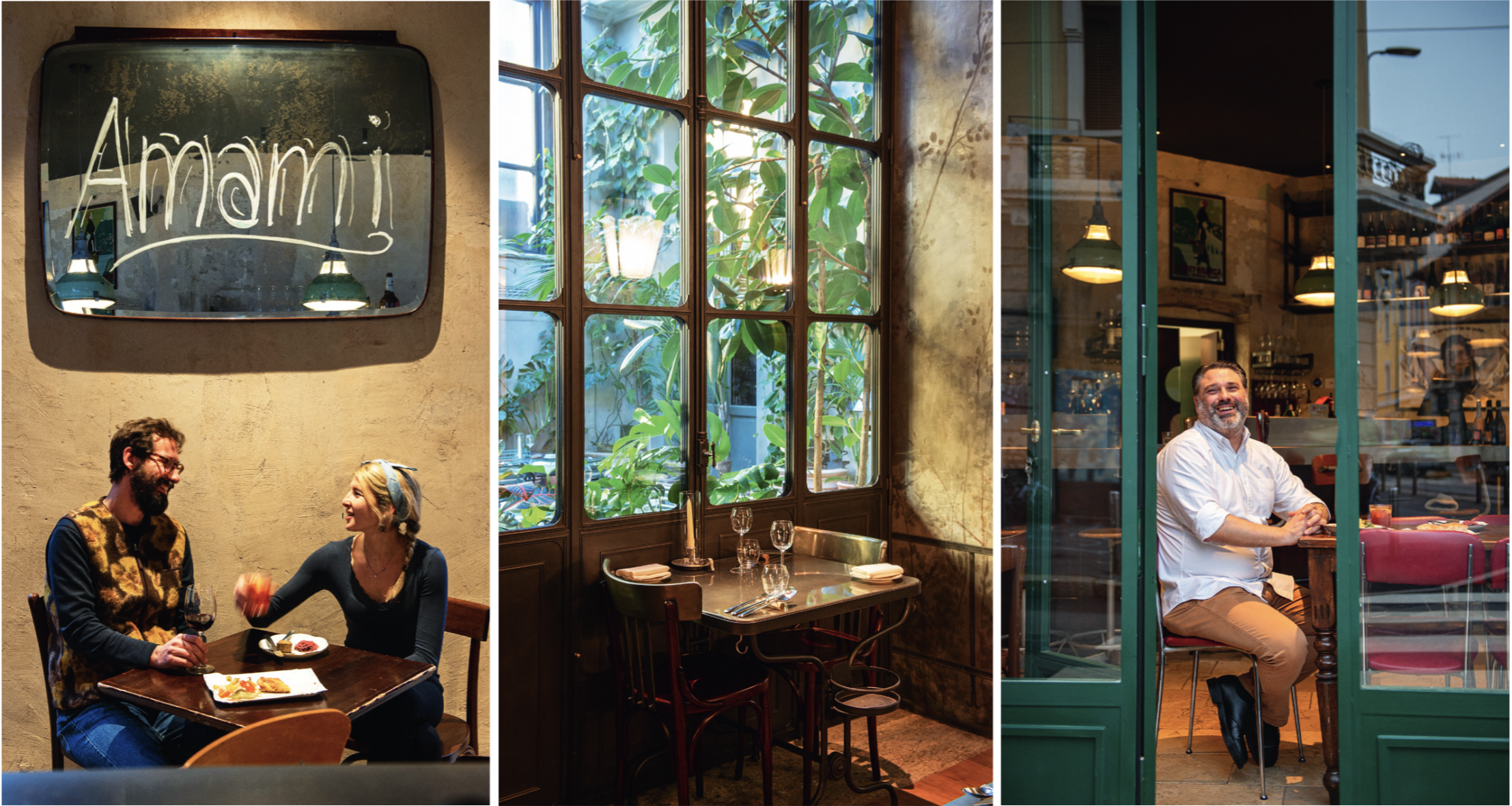
Food Glossary
- Cassoeula
- A substantial stew consisting of braised pork cutlets and cabbage, often accompanied by a side of polenta
- Cotoletta alla Milanese
- A thinly pounded veal cutlet coated in breadcrumbs and pan-fried
- Gremolà or gremolata
- Zesty herb relish made with parsley, minced garlic and lemon zest. Mashed anchovies can also be added. Traditionally used to garnish ossobuco (see below)
- Mariconda
- A soup of bread dumplings
- Michetta
- White bread roll with a peculiarly bulging round shape, a firm crust and hollow interior. Its origins probably go back to the period of Austrian rule in the 18th century
- Mondeghili
- Meatballs traditionally made with leftover meat, eggs, stale bread soaked in milk, chopped parsley and lemon peel
- Ossobuco
- A special cut of veal which is sliced horizontally through the bone to expose the marrow. The veal shanks are braised in broth until tender and the marrow melts away, adding a rich, buttery flavour to the dish. Ossobuco may be served with risotto alla Milanese (see below), polenta, or as a version made with peas
- Risotto all Milanese
- Emblematic saffron-flavoured risotto, originally called risotto giallo (yellow risotto)
- Risotto al salto
- A dish made with leftover risotto shaped into a disc and cooked briefly in a hot pan or under a grill until crunchy
Get Premium access to all the latest content online
Subscribe and view full print editions online... Subscribe

